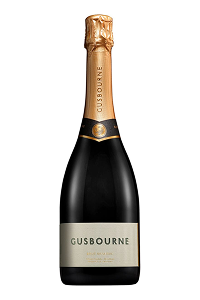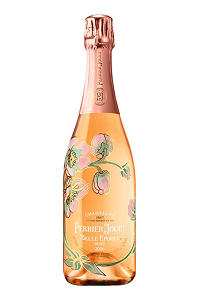Top bottles and insights on Champagne in 2025
The ultimate symbol of luxury and refinement, Champagne remains the world’s most coveted sparkling wine. In this guide we will spill all the best Champagne wine secrets: its history, production process, expert tips for serving and pairing with food.
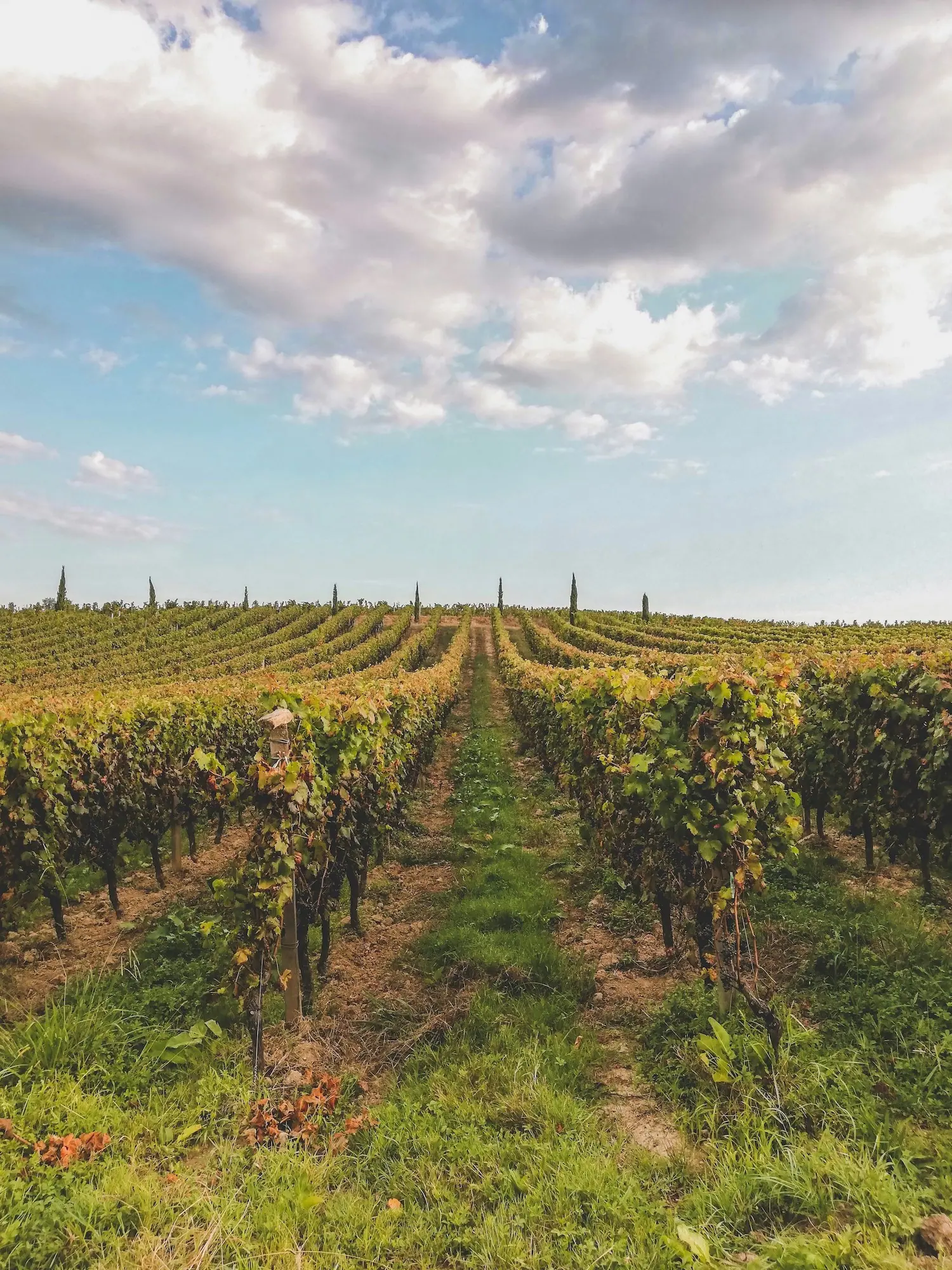
By
Last updated:
Top 10 list of the best Champagnes in the world
If you are looking for the best Champagne bottles to pop for your next celebration, we have done the homework for you! From legendary houses to surprising small producers our list of best rated Champagne covers all budgets and tastes.
Whether you are splurging on luxury or hunting for amazing value this top ten best Champagne list has your perfect bottle waiting!
Champagne wine taste and style profile at a glance
| Attribute | Details |
|---|---|
| Grape Variety | Chardonnay, Pinot Noir, Pinot Meunier (blends or single-varietal) |
| Origin | Champagne AOC, France |
| Serving Temperature | 45 – 50°F (not ice-cold) |
| Decanting | Optional (mainly for prestige/long-aged cuvées) |
| Aging Potential | NV: 3-5 yrs / Vintage: 10-20+ yrs / Prestige: 20-30+ yrs |
| Flavor Profile | Green apple, citrus, brioche, almond, toast, mineral |
| Structure | Light to medium body, razor acidity, persistent mousse |
| Alcohol Content | 12% – 12.5% |
| Ideal Glass | Tulip or white wine glass |
| Food Pairing | Oysters, caviar, fried chicken, truffle dishes, aged Comté |
| Top Communes | Montagne de Reims, Côte des Blancs, Vallée de la Marne |
| Notable Producers | Krug, Dom Pérignon, Salon, Bollinger, Jacques Selosse, Moët & Chandon |
When it comes to Champagne wine taste, it is all about balance: crisp acidity, fine bubbles, and layered complexity. The flavor profile typically features:
- Citrus zest: lemon, grapefruit (younger Champagnes).
- Tree fruits: green apple, pear (classic non-vintage).
- Toasted notes: brioche, almond (aged or vintage bottles).
- Mineral undertones: flinty, chalky (terroir-driven styles).
See the table above for more insights into Champagne, including how grape varieties, terroir and serving temperature shape its flavor profile, texture and pairing potential.
What is Champagne wine and how is it made?
Champagne wine is a sparkling wine made exclusively in the Champagne region of northeastern France, protected by the AOC (Appellation d’Origine Contrôlée). Champagne’s production follows the rigorous méthode champenoise, a multi-step classic process that transforms still wine into sparkling perfection. Let’s break down the process step by step, after the first fermentation:
- Blending (assemblage): the chef de cave crafts the final blend using multiple grape varieties from different crus and reserve wines (except for vintage Champagnes).
- Bottle fermentation: a mix of sugar and yeast is added before bottling. This creates natural bubbles and increases the Champagne ABV to about 12 -12.5%.
- Aging on lees: Champagne ages on lees for at least 15 months (non-vintage) or 3+ years (vintage). This develops creamy texture and flavors like brioche and toasted almond.
- Riddling (remuage): bottles are tilted and rotated to collect yeast sediment in the neck over 4-8 weeks.
- Disgorgement: the frozen sediment plug (-27°F) is ejected, leaving clear wine while maintaining pressure.
- Dosage: a sugar-wine mixture adjusts sweetness (Brut Nature to Brut) and replaces lost volume.
This time honored process is what creates the best quality Champagne, where every bubble carries the legacy of France’s most celebrated terroir and centuries of winemaking mastery.
Types of Champagne from Brut to sweet
Champagne comes in a variety of styles, from the crisp dryness of Brut to the luscious sweetness of dessert-style bottles. The type of Champagne you choose depends on your palate, the grapes used, and the moment you’re celebrating.
The three main Champagne wine grapes are:
- Chardonnay
- Pinot Noir
- Pinot Meunier
These grapes, grown in the region’s chalky soils, create the foundation for all Champagne styles:
- Brut Non-Vintage (NV): the most common style, a blend of Chardonnay, Pinot Noir, and Pinot Meunier. Dry, versatile, and perfect for any occasion.
- Extra Brut: one of the best dry Champagne styles with little or no added sugar. Highlights acidity and minerality, ideal for those who love a pure, crisp taste.
- Blanc de Blancs: crafted exclusively from Chardonnay, these Champagnes showcase the purity of white grapes grown in chalky soils.
- Blanc de Noirs: power meets finesse in these Pinot Noir/Pinot Meunier dominant wines. Fuller-bodied than Blanc de Blancs, they deliver red fruit intensity.
- Vintage: declared only in exceptional years (about 3-4 times per decade), vintage Champagnes capture a specific harvest’s character.
- Prestige Cuvée: the pinnacle of Champagne craftsmanship, these limited productions use the finest grapes from grand cru vineyards.
- Demi-Sec: a sweeter style of Champagne with higher residual sugar, perfect for pairing with desserts or enjoying as a sweeter treat.
The charm of rose Champagne
Although Champagne is traditionally known as a white sparkling wine, exceptional rosé Champagnes are also widely available. This wine gets its color:
- By blending a small amount of red Pinot Noir (5-15%) before the second fermentation.
- By using the saignée method, where grape skins briefly macerate with the juice.
Also known as the best pink Champagne, it combines vibrant red fruit flavors with crisp minerality making them surprisingly versatile. Result: you can pair it equally well with fresh oysters or spicy Asian cuisine!
Our recommendation of the best rose Champagne: Rose Belle Epoque 2006 by Perrier-Jouet
Best Champagne brands: Dom Pérignon and 4 more icons
Among hundreds of producers, we have selected the 5 best Champagne brands delivering unparalleled quality year after year. Leading the list is one of the most iconic names in the world: Dom Pérignon, often considered the best Champagne company all over the world.
Among its legendary vintages, the best Dom Pérignon Champagne is widely regarded as the Vintage 1982, a rare and complex cuvée with decades of aging.
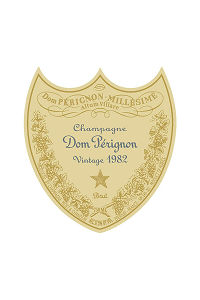
Year: 1982
Tasting notes: Nutmeg, spice, chocolate and vanilla notes.
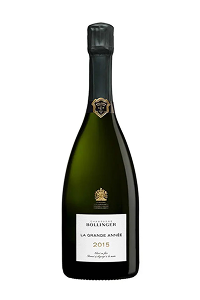
Year: 2015
Tasting notes: Notes of chocolate and citrus fruits.
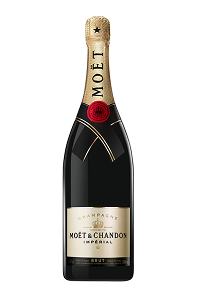
Tasting notes: Aromas of biscuit and almond, ripe golden apple and grapefruit
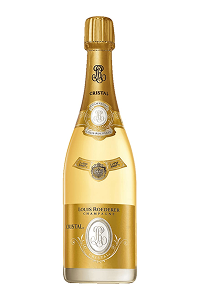
Year: 2016
Tasting notes: Notes of citrus blossom, mint, lemon and lime zest
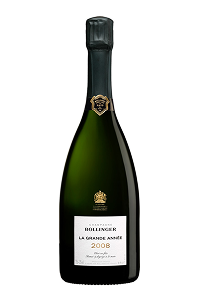
Year: 2008
Tasting notes: Notes of stone fruits, white flowers, honeysuckle
Champagne wine cost from non-vintage to luxury bottles
Finding the best bottles of Champagne is not hard work, but understanding how prices vary helps you shop smarter. Whether you want the best Moët Champagne for a party or a rare vintage for collecting, here’s what affects the Champagne wine cost:
- Type and classification: non-vintage blends are more accessible than prestige cuvées, due to aging and craftsmanship.
- Producer reputation: the best Champagne houses like Krug, Bollinger, or Louis Roederer tend to price their wines higher due to heritage, consistency, and demand.
- Grape sourcing and terroir: single vineyard or Grand Cru Champagne typically come at a premium.
- Aging and production style: bottles that spend longer on the lees develop deeper complexity often driving up price.
- Rarity and special editions: limited releases, large formats (like magnums) or aged Plénitude editions can easily exceed $500/1000.
In the table below, you will find helpful tips on price ranges and selected bottles.
-
1. Yellow Label Brut - Veuve Clicquot
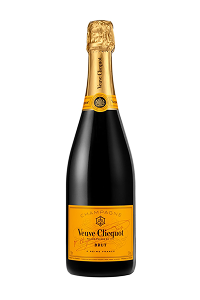
Tasting notes: Notes of berry biscuits, fresh strawberries and gently toasty brioche.
From: $50.00
-
2. Vintage 1996 - Dom Pérignon

-
3. Comtes de Champagne Blanc de Blancs 2013 - Taittinger
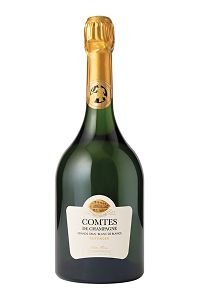
Tasting notes: Notes of bright citrus, white flowers, and hints of toasted almond and brioche.
From: $200.00
-
4. Vieilles Vignes Champagne 1989 - Bollinger
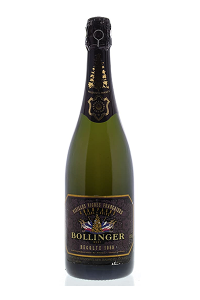
3 Best Champagne bottles for collectors
Looking for the best Champagne to gift for true connoisseurs? Serious collectors don’t just buy expensive wines, they invest in the best bottle of Champagne that meet at least these exacting 6 criteria:
- Proven aging potential
- Critical consensus
- Limited production
- Prestige pedigree
- Optimal formats
- Vintage Distinction
Why do they matter? These factors are what stands in between truly collectible Champagne and ordinary luxury bottles. The best Champagne in the world becomes both a liquid masterpiece and an appreciating asset. Here are three remarkable Champagnes that stand out as collector’s essentials.
Best Champagne vintages: how to spot a legendary year
For collectors and enthusiasts alike, hunting for the best Champagne vintages means seeking those rare years when nature and craftsmanship create something extraordinary. In general, the best Champagne years occur when ideal weather, perfect ripeness, and cellar-worthy potential converge, resulting in bottles that evolve beautifully for decades.
Below, discover a list highlighting the best years for Champagne based on critics acclaim, aging potential, and that magical balance of power and finesse that defines truly great bottles.
| Vintage | Recommended Champagne | Vintage Characteristics |
|---|---|---|
| 2015 | Cuvée Paradis Brut 2015 – Alfred Gratien | Warm and sunny growing season with early ripening. Grapes reached full maturity quickly. |
| 2012 | Cristal Brut 2012 – Louis Roederer | Mild spring, warm and dry summer. Ideal weather at harvest ensured healthy, ripe grapes. |
| 2008 | Vintage 2008 – Dom Pérignon | Cool and cloudy season with slow, even ripening, harvest under dry and favorable conditions. |
| 2002 | La Grande Année Brut 2002 – Bollinger | Stable and warm summer with excellent sunshine. Grapes matured steadily with little disease pressure. |
| 1996 | Sir Winston Churchill Brut 1996 – Pol Roger | Warm summer followed by a very dry, cool September. Grapes harvested in excellent condition. |
| 1990 | Brut 1990 – House of Krug | Hot and dry growing season, consistent sunshine led to perfectly ripe and concentrated grapes. |
Wondering what is the best year for Dom Pérignon Champagne? The legendary 2008 Vintage is often praised as one of the greatest!
New to Champagne? Here are 5 tips to get started
Champagne might sound intimidating to wine beginners, but it’s easier to enjoy than you think! The first secret to starting right lies in non vintage Champagnes to Brut styles. These expertly crafted blends deliver the authentic Champagne experience at accessible prices, while maintaining each house’s signature character.
Here are some additional tips to serve and enjoy Champagne:
- Chill properly to around 45-48°F.
- Choose tulip-shaped glasses for aroma and bubbles.
- Store bottles lying down in a cool, dark place.
- Drink within 3-5 years for optimal freshness.
Additional note: online shopping can be convenient just make sure to choose the best place to buy Champagne online to guarantee authenticity and ideal shipping conditions.
Use the following guide to match food with the right Champagne style and age:
| Champagne Style | Our Recommendation | Best to Pair with |
|---|---|---|
| Young Champagne (under 5 yrs) | Les Beaux Regards Premier Cru Extra Brut 2020 – Bereche & Fils | Light appetizers, seafood, sushi, fresh salads |
| Vintage Champagne (10+ yrs) | Vintage 2012 – Champagne Palmer | Braised meats, truffles, aged cheese |
4 Champagne glasses that preserve the bubbles
The right glass for Champagne has two main tasks: it keeps your bubbles lively, and it makes the flavors pop. Some Champagne glasses are specially designed with a tall, narrow shape to preserve carbonation (bubbles last 3x longer than in a regular glass!) while others are shaped in the form of a coup (cup) in order to open the aromas to your nose and palate.
In the table below, you will find the best glasses to use for Champagne: from classic coupes and flutes to modern tulip shapes.
| Champagne Glasses | Details |
|---|---|
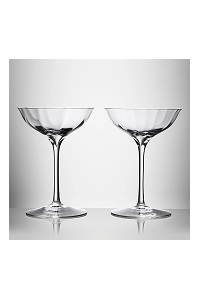
Elegance Optic Belle Coupe (Set of 2) / 7 oz, 6.1 inches
5.0/5
From: $100.00
|
Classic vintage coupe glasses, with a wider bowl and a touch of elegance. |
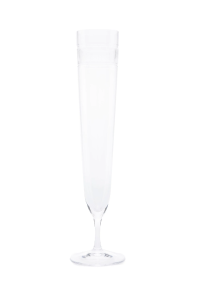
Ralph Lauren Home Champagne Flute / 6 oz, 8.7 inches
4.9/5
From: $130.00
|
Refined flute with a sleek silhouette and crystal-clear clarity, embodying Ralph Lauren’s signature. |
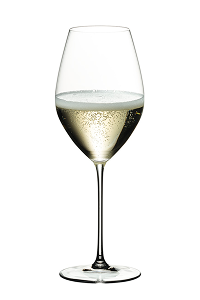
Riedel Veritas Champagne Glasses (Set of 2) / 6 oz, 8.3 inches
4.9/5
From: $80.00
|
Fine crystal with a tall, slim bowl and a thin stem. Lightweight and durable. |
Champagne: the one and only producing region
When you sip a glass of the best French Champagne, you’re tasting something that literally couldn’t be made anywhere else on Earth. Champagne is legally protected by the Appellation d’Origine Contrôlée (AOC) meaning only certain wines can bear the name Champagne.
To qualify, a wine must:
- Be produced in the Champagne region of northeastern France.
- Use specific approved grape varieties (such as Chardonnay, Pinot Noir and Pinot Meunier).
- Be made using the traditional method (with a second fermentation in the bottle).
This region is made up of five main communes:
- Montagne de Reims: where Pinot Noir develops spine-tingling structure
Try a classic: La Grande Annee Brut by Bollinger - Côte des Blancs: Chardonnay’s spiritual home, crafting laser-precise Blanc de Blancs
Try a classic: Blanc de Blancs Le Mesnil by Salon - Vallée de la Marne: Pinot Meunier’s playground for juicy, gulpable bubbly
Try a classic: Cuvee Nicolas Francois Brut 2012 by Billecart-Salmon - Aube (Côte des Bar): the rising star with Burgundian-like Pinot Noir depth
Try a classic: Resonance Blanc de Noirs Extra Brut by Marie Courtin - Côte de Sézanne: the “soft side” of Chardonnay, adding approachable charm
Try a classic: Blanc de Blancs Prestige Premier Cru Brut 2008 by Duval-Leroy
Fun fact: 47% of Champagne is consumed in France but the rest of the world drinks the remaining 53% in just 5 days (New Year’s Eve and holiday celebrations)!
4 Wines similar to Champagne to gift and impress
Real Champagne is one of a kind, crafted only in France’s Champagne region under strict rules. But if you’re open to other bubbly, there is a whole world of wines similar to Champagne to gift or enjoy yourself.
Among these, American sparkling wines have carved out a special niche. Often referred to as the best American Champagne bottles from California’s Napa Valley and Sonoma showcase how New World terroir interprets the traditional method.
Italy also contributes the cheerful, fruit forward Franciacorta, while Spain offers the robust, food friendly Cava. Check out the table below to explore these sparkling cousins.
| Wine / Main Grape | Top Wine & Wine Maker | Wine style |
|---|---|---|
| Prosecco ( Pinot Noir, Chardonnay) |
61’ Franciacorta Brut Nature – Berlucchi | Elegant, fresh, with bright citrus and green apple notes. |
| Crémant (Pinot Blanc, Chardonnay, Riesling) |
Crémant du Jura – Bénédicte et Stéphane Tissot | Fresh, crisp, with fine bubbles, notes of apple, pear, and brioche. |
| Cava (Macabeo, Xarel-lo, Parellada) |
Clos Damiana Gran Reserva 2009 – Cava Mestres | Medium bodied, vibrant acidity, with citrus, almond, and toasty notes. |
| American Sparkling Wine (Pinot Noir) |
Blanc de Noirs 2013 – Ultramarine | Rich, complex, made from Pinot Noir, with red fruit, creamy texture and bright acidity. |
What is the best way to store Champagne?
Knowing the best way to store Champagne is the foundation for preserving its magical effervescence and nuanced flavors. Equally important is knowing how Champagne is best served. These professional techniques transform your tasting experience:
- Store horizontally in a cool, dark place.
- Serve at the ideal 46-50°F.
- Chill for 3 hours in the fridge (or 30 minutes in an ice bucket).
- Open gently at a 45° angle to preserve bubbles.
- Pour into tulip glasses or flutes to enhance aromas.
Pro Tip: Never store Champagne in a regular kitchen fridge long term, it’s too cold and dry!
What food pairs well with Champagne?
f you are looking for a wine that turns every meal into a special occasion, Champagne is the perfect choice! Its vibrant bubbles and crisp acidity make it a star in any Champagne food pairing, effortlessly complementing everything from casual appetizers to gourmet dishes.
Fun fact: in France, it’s traditional to enjoy Champagne with buttered brioche for breakfast during celebrations, the ultimate luxurious start to the day!
Curious about what type of Champagne pairs best with caviar? Explore these perfect matches and find the best Champagne to drink with your favorite food, including the best Champagne for caviar!
| Food | Best Champagne Bottle | Aged | Type & Structure |
|---|---|---|---|
| Appetizers & Light Snacks | Yellow Label Brut – Veuve Clicquot | 1-3 years ABV 12% |
Crisp, fresh, vibrant acidity, delicate bubbles. |
| Oysters & Caviar | Comtes de Champagne Blanc de Blancs 2013 – Champagne Taittinger | 3-5 years ABV 12,5% |
Crisp, mineral, brut. |
| Poultry & White Meats | Brut Blanc de Blancs – Ruinart | 3-7 years ABV 12,5% |
Floral, bright citrus, elegant. |
| Artisanal Cheese | Brut Premier – Louis Roederer | 5+ years ABV 12% |
Balanced, toasty, nutty undertones. |
| Celebration Brunch with Eggs Benedict, Smoked Salmon |
Grande Cuvee Brut (169th Edition) – House of Krug | 7+ years ABV 12,5% |
Powerful, layered, intense with fine bubbles. |
FAQs Champagne wine bottles
The best Champagne in the world is often considered P3 Plenitude 1992 by Dom Pérignon, produced by Moët & Chandon. This prestigious Champagne is renowned for its exceptional quality, rich history and limited production. Critics and enthusiasts praise its complex flavors, fine bubbles and aging potential. Other top contenders include Krug Clos d’Ambonnay and Louis Roederer Cristal.
Global Champagne Day is an annual celebration held on the third Friday of October to honor the heritage, culture and joy of Champagne. Around the world, enthusiasts raise a glass to toast the iconic sparkling wine, often with tastings, events and social media tributes to its elegance and tradition.
The highest grade of Champagne is Grand Cru, made from grapes grown in the 17 best-rated villages in France’s Champagne region. These Champagnes, like Salon Le Mesnil Blanc de Blancs, undergo strict quality control yielding refined flavors and exceptional aging potential. Premier Cru is the next tier, still excellent but slightly less exclusive than Grand Cru.
The best sweet Champagne is Moët & Chandon Nectar Impérial Rosé, a demi-sec (semi-sweet) style with fruity, floral notes. For a richer sweetness, Veuve Clicquot Demi-Sec offers honeyed flavors while Dom Pérignon P2 Plénitude Sec provides a refined, slightly sweet profile. These Champagnes balance sweetness with acidity making them perfect for desserts.
The best American “Champagne” (legally called sparkling wine) is Schramsberg Blanc de Blancs from California. Made in the traditional method, it rivals French Champagne with its crisp acidity and fine bubbles. Other top options include Domaine Carneros Brut and Roederer Estate Anderson Valley Brut, known for their elegance and complexity.
Champagne ranges from bone-dry (Brut Nature) to sweet (Doux). The most common style is Brut, which is dry with a hint of sweetness. Extra Brut is drier, while Sec and Demi-Sec are noticeably sweeter. The sweetness level depends on dosage (added sugar) allowing Champagne to pair with various foods or suit different palates.
Champagne typically has an alcohol by volume (ABV) of 12% to 12.5%, similar to most still wines. The secondary fermentation process doesn’t significantly increase alcohol content. Some prestige cuvées may reach 13%-13.5% ABV, but Champagne is generally light enough to enjoy without overwhelming potency making it ideal for celebrations.
True Champagne comes exclusively from France’s Champagne region, protected by EU law. Sparkling wines made elsewhere (e.g., California, Italy) must be labeled differently, like “sparkling wine” or “Cava.” However, some U.S. producers grandfathered before 2006 can legally use “Champagne” on labels, though purists recognize only French made Champagne.
An opened bottle of Champagne stays fresh for 1-3 days if properly sealed with a sparkling wine stopper and refrigerated. The bubbles fade over time but the flavor remains enjoyable. Non-vintage Champagne loses effervescence faster than vintage or prestige cuvées which may retain quality slightly longer due to their robust structure.
Yes, Champagne should be chilled to 45-50°F for optimal taste. Too cold, the flavors are muted; too warm, it loses crispness. Chill for 3 hours in the fridge or 30 minutes in an ice bucket. Prestige cuvées benefit from slightly warmer serving temps (50-55°F) to enhance their complex aromas.
Champagne is expensive due to labor intensive production, limited grape growing regions and aging requirements. The traditional method involves hand harvesting, secondary fermentation in bottles and years of aging. Luxury brands like Krug or Dom Pérignon also invest in premium grapes, meticulous blending and prestigious branding, justifying their high prices.













